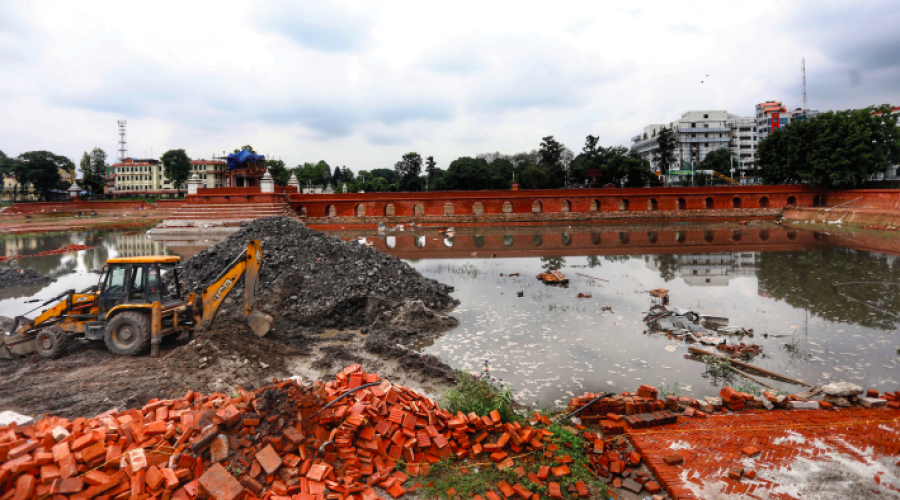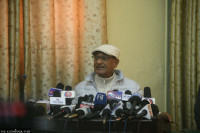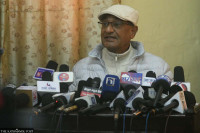National
Reconstruction authority draws criticism for using groundwater to fill Rani Pokhari
Conservationists write to Department of Archeology and Kathmandu Metropolitan City against the move.
Anup Ojha
After completing the restoration of the iconic Rani Pokhari in the heart of Kathmandu, ravaged by the 2015 quake, the National Reconstruction Authority has started filling the pond with groundwater.
The authority on Tuesday pumped muddy water extracted from deep borewells into the historic pond to the dismay of heritage activists, cultural experts and hydrologists.
“I humbly request [the authority] not to make this mistake. Pratap Malla brought sacred water from 51 different shrines from the Himalayas to the ocean and sanctified this pond...,” tweeted heritage conservation activist Alok Siddhi Tuladhar.
Groundwater experts and conservationists had been voicing their concerns ever since the authority worked on two boreholes, each 240-feet, to the northeast and southeast of the pond. They had said that extracting water from the ground would disturb the area’s groundwater reserve and endanger the Kathmandu Valley.
“This is not a good idea,” said groundwater expert Padma Sundar Joshi of UN Habitat Nepal. Refilling a pond with groundwater is never good for the water table,” said Joshi. He suggested that the 17th century pond be revived using the same means King Pratap Malla used when it was built.
Kashinath Tamot, an epigraphist, researcher and cultural expert, suggests the authority find a natural solution. “The authority should be sensible and demonstrate its farsightedness in this regard,” said Tamot.
When contacted by the Post, Raju Man Manandhar, assigned by the authority to oversee reconstruction work at Rani Pokhari, said he was not aware that water from the well was being used to fill the pond.
“We had asked that water from the borewell be tested first, said Manandhar. “But The contractor pumped muddy water into the pond,” said Manandhar. He also added that groundwater will be used only when necessary.
The iconic pond, spread across 3.2 hectare, was drained during its reconstruction. Experts said it will require 32.1 million litres of water to refill Rani Pokhari.
Sushil Gyawali, chief executive officer at the authority, has been saying that rainwater harvested at Durbar High School and Tri Chandra College in the vicinity of the pond will be used to fill the pond. A dedicated pipeline under the Melamchi Water Supply Project will also be used, Gyawali has been saying.
But heritage experts doubt the plans are realistic. “They are going to refill the pond using groundwater because the authority just wants to show off its work, but this will have negative consequences,” said heritage activist Ganapati Lal Shrestha, one of the campaigners pressing the authority to reconstruct the Rani Pokhari and its Balgopaleshwor temple in its original form.
“We have already written to the Department of Archeology and Kathmandu Metropolitan City. Groundwater extraction is the major reason why spouts are running dry in Kathmandu. This has to be banned,” said Shrestha.
Tuladhar alleged the authority was in a hurry to finish work on the pond and didn’t care about the possible impacts of groundwater extraction.
The authority was about to complete the reconstruction work in mid-April, but work was halted following the nationwide lockdown. Construction resumed after Prime Minister KP Sharma Oli instructed the authority to do so.
The government last year handed over the reconstruction project to the National Reconstruction Authority after the Kathmandu Metropolitan City failed to do the job.




 6.12°C Kathmandu
6.12°C Kathmandu.jpg)













%20(1).jpg&w=300&height=200)

